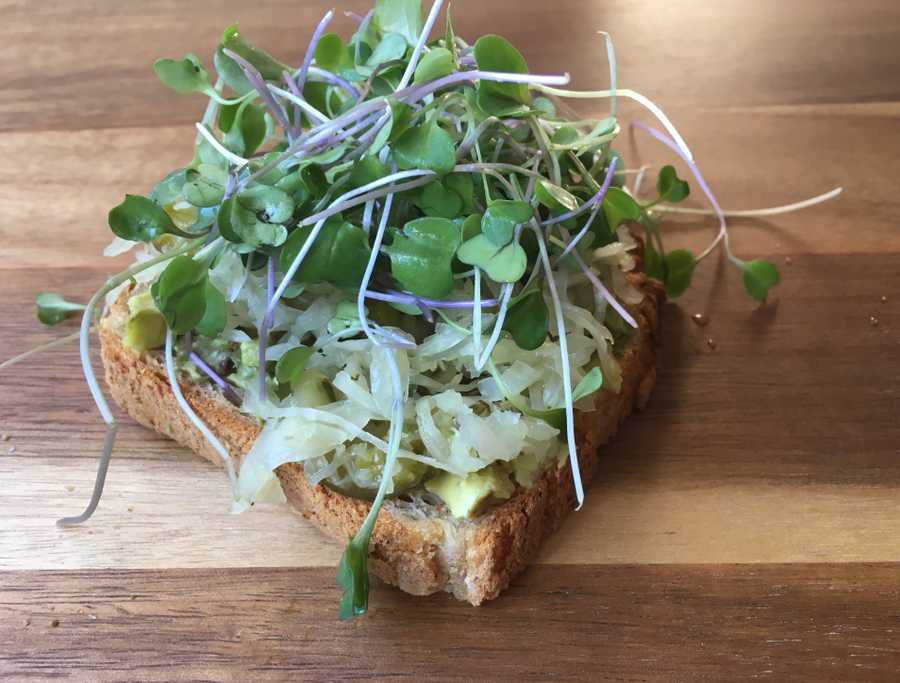Probiotic Loaded Avocado Toast
by Amylee Amos PhD, RDN, IFMCPRecipes
We are living in the age of avocado toast. Nearly every restaurant (at least in LA) is sporting their own version of avocado toast on the menu. It’s not surprising, given that avocado toast is generally pretty delicious. We, at the Amos Institute, have created our own indulgent version, but with a more nutritious spin to make the dish aid in disease prevention and overall wellness.
First of all we’re using a gluten free bread. The gluten in wheat can contribute to altered intestinal permeability, so we’ve eliminated it for that purpose. I highly suggest that you make your own gluten free bread, but if you’re going to buy it, be very selective. Some gluten free products are loaded with sugars and other stabilizers to give gluten free bread the texture that the gluten normally provides. Beware of these types of products and look instead for a gluten free bread made with whole, familiar ingredients like almond flour, eggs, and apple cider vinegar.
Beyond the gluten free bread, this avocado toast includes a big scoop of fermented vegetables. Fermented vegetables, like the kraut we’re using on this toast, are full of probiotics, which are the healthy bacteria that line our gut. We should all be eating probiotics in some form every day to keep our gut healthy, so this probiotic loaded avocado toast provides you with your daily dose.
Finally, for an added punch of flavor and nutrients, we’ve added microgreens and za’atar. Microgreens are tiny greens that germinate in just one to two weeks. These little, baby greens have been found to be even more nutrient dense than their larger counterparts (1). You can choose any type of microgreens that you can find- just make sure that they’re organic and that you wash them well. Za’atar is a middle eastern herb and spice blend. There are many different variations of za’atar, but it is traditionally made with thyme, cumin, coriander, sumac, and sesame seeds. All of these ingredients are packed with phytonutrients that help support optimal health. Just be aware that some types of za’atar contain wheat, so check the ingredients to make sure that yours does not. Syrian za’atar typically does not have wheat, but check the ingredients just in case.
This recipe serves 1
Ingredients:
- 1 slice gluten free bread
- ½ avocado
- ¼ tsp sea salt
- ½ tsp za’atar
- ⅛ cup fermented cabbage*
- ¼ cup microgreens
Directions:
- Toast your bread.
- Spread the avocado evenly over the toast.
- Sprinkle on the salt and za’atar.
- Spread the fermented cabbage evenly over the toast.
- Top with microgreens and serve.
*Note: My favorite brand is the Farmhouse Culture Garlic Dill Pickle Kraut. It has a neutral, pickled flavor that goes nicely with this dish.
References:
- Xiao, Z, et al. (2012). Assessment of Vitamin and Carotenoid Concentrations of Emerging Food Products: Edible Microgreens. Journal of Agricultural and Food Chemistry, vol. 60, no. 31, pp. 7644–7651. doi:10.1021/jf300459b.